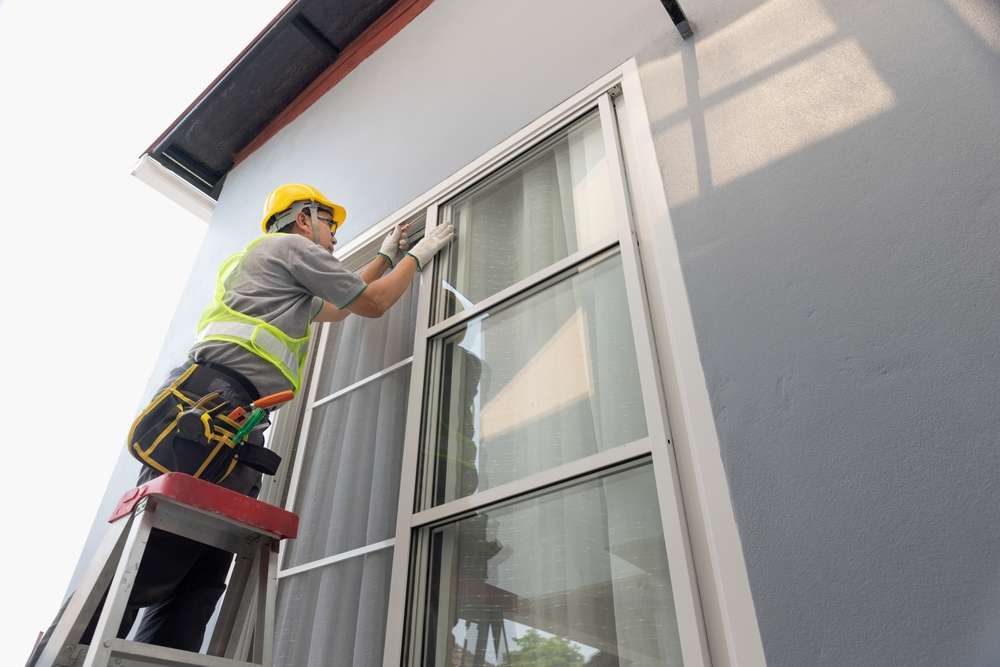Select the Ideal Garage Door: Style, Durability & Value
A garage door affects more than access — it shapes curb appeal, home security, energy efficiency and daily convenience. This guide compares common door types (sectional, roll-up, tilt-up, slide) and materials (steel, wood, aluminum), explains insulation, wind resistance and safety features, and offers maintenance and installer tips to help you choose the best option for your climate, budget and long-term goals. Learn how the right selection can lower energy bills, boost resale value and keep your home protected.

Overview
A garage door does far more than open and close; it’s a major visual element of your home’s exterior and a key factor in safety, insulation and everyday usability. Picking the right door means matching operational style, material and performance to your property’s architecture, local weather and budget. Below is a practical breakdown of common door styles and materials, how they influence value and efficiency, and simple upkeep and hiring tips to ensure a successful installation.
Door styles and core functions
Garage doors operate in different ways to suit layout and clearance requirements:
- Sectional: Made of horizontal panels that roll up along tracks. These are the most common residential choice, saving ceiling space and offering good insulation options.
- Roll-up (rolling) doors: Often used for tight ceiling spaces or commercial applications, these curl into a compact coil above the opening and are durable for frequent use.
- Tilt-up (up-and-over): A single solid panel pivots out and up. They require more front clearance but are simple mechanically and can be an economical option.
- Slide/side-hinged: Doors slide or swing to the side and are useful where overhead clearance is limited or for traditional garage aesthetics.
Beyond the mechanism, evaluate insulation (look for R-value ratings), wind resistance for storm-prone areas, and compatibility with automatic openers. A thoughtfully chosen door improves thermal performance, cuts down on street noise, and can enhance resale value. Prioritize safety features like pinch-resistant panels and automatic-reverse systems, and check warranty coverage when comparing models.
Curb appeal and home-improvement impact
Replacing a garage door is regularly listed among high-return home improvements because it dramatically changes the home’s frontage. Visual elements such as color, panel configuration, window inserts and decorative hardware influence whether the door complements or clashes with your façade. Energy-efficient doors with insulated cores can reduce heating and cooling costs in many climates, adding both immediate aesthetic impact and ongoing savings.
When planning upgrades, select designs and finishes that harmonize with your home’s architectural style and choose materials capable of withstanding local weather — sun, humidity, salt air or high winds all affect longevity and appearance.
Material options: steel
Steel doors are a practical, budget-friendly option known for strength and low upkeep. They resist warping and typically offer greater fire resistance than many other materials. Most steel doors are available with insulated cores and protective surface coatings; choosing galvanized steel or a powder-coated finish will reduce the risk of rust and extend service life. Steel can dent if struck, but modern styles and textured finishes can mimic traditional wood looks while delivering contemporary performance.
Material options: wood
Wood doors offer rich, classic aesthetics and a natural warmth that’s difficult to replicate. They’re ideal for traditional, historic or custom homes and can be stained or painted to match trim and siding. The trade-off is higher maintenance — wood needs periodic sealing, painting or staining to prevent moisture damage, pests and warping. With diligent care, a wood door can last for decades, but plan for higher initial cost and ongoing upkeep compared with metal or composite alternatives.
Material options: aluminum
Aluminum doors are lightweight and naturally corrosion-resistant, making them well suited to coastal or humid settings. Their slim frames let manufacturers use larger glass panels, increasing natural light — a common preference in modern, minimalist architecture. Aluminum dents more easily than steel, so it’s less ideal where impact resistance is a priority. Many aluminum models include thermal breaks and insulation options to boost energy performance despite the slim profile.
Choosing between materials
When deciding among steel, wood, aluminum or other materials, weigh these factors:
- Aesthetics: Which material best complements your home’s style?
- Maintenance: How much time and cost are you willing to invest in upkeep?
- Longevity: Which option holds up in your climate and usage patterns?
- Energy performance: Check R-values and insulated-core options for thermal efficiency.
- Budget: Account for both upfront price and lifecycle costs (repairs, refinishing).
Maintenance checklist
Routine care extends a garage door’s life and maintains safe operation. Key tasks include:
- Lubricate rollers, hinges, and springs annually (or per manufacturer guidance).
- Inspect and replace weather seals to prevent drafts and water intrusion.
- Check and balance springs and cables for proper tension.
- Test safety features like the auto-reverse sensor and edge sensors regularly.
- Repaint, reseal or refinish surfaces as needed — especially wood and any coating showing wear.
Hiring installers and scheduling major repairs
For installation or significant repairs, use licensed local professionals who understand proper sizing, balanced spring systems and safety regulations. Ask potential contractors for proof of license and insurance, read customer reviews, and request references. Confirm the specifics of workmanship and product warranties — know what’s covered and for how long. A reputable installer will perform a safety inspection, set the opener and springs to the correct tension, and demonstrate the door’s safety features before finalizing the job.
Conclusion
Choosing the right garage door is a balance of form and function. Material choice determines maintenance demands and lifespan, while style, color and details shape curb appeal and can influence property value. Understanding the differences between sectional, roll-up, tilt-up and slide mechanisms and the pros and cons of steel, wood and aluminum will help you match a door to your home, climate and long-term plans. With informed selection, professional installation and routine maintenance, your garage door will enhance both your home’s appearance and its performance for years to come.






